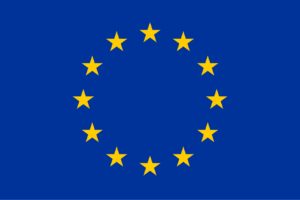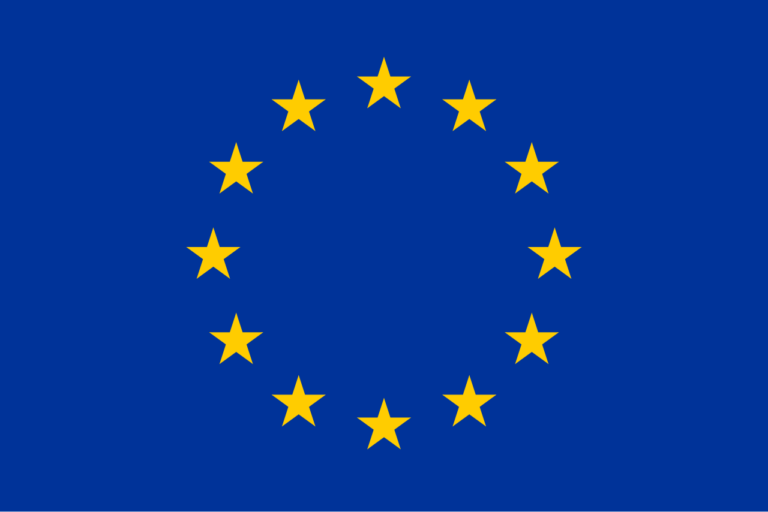1. Historical outline of the idea and attempts to create a common European army:
1.1. The Seeds of the Idea (Post-WWII)
The Trauma of Two World Wars: The devastating impact of two world wars on Europe fueled the desire for lasting peace and security.
The Rise of the Soviet Union: The Cold War and the threat of Soviet expansionism further intensified the need for collective defense.
Early Initiatives:
The Schuman Declaration (1950): Proposed by French Foreign Minister Robert Schuman, this landmark declaration called for the pooling of coal and steel production, laying the foundation for European integration.
The Pleven Plan (1950): French Prime Minister René Pleven proposed the creation of a European Defence Community (EDC), a supranational army with integrated forces from France, West Germany, Italy, and the Benelux countries. This was aimed at reintegrating West Germany into the European security architecture while preventing its re-emergence as a military power.
1.2. The European Defence Community (EDC) – A Bold Attempt, A Bitter Failure
The EDC Treaty (1952): Signed by the six founding members, the treaty envisioned a unified European army under a supranational authority.
French Opposition: The EDC faced strong opposition in France, particularly from the Gaullists, who feared a loss of national sovereignty.
The Collapse of the EDC (1954): The French National Assembly voted against the treaty, effectively killing the project.
1.3. Alternative Paths – NATO and the Western European Union (WEU)
The Rise of NATO: With the EDC dead, West Germany joined NATO in 1955, marking a shift towards transatlantic security cooperation.
The Western European Union (1954): Formed as an alternative to the EDC, the WEU focused on political cooperation and defense matters, but its role remained limited.
1.4. Towards a More Integrated European Defense (Post-Cold War)
The Maastricht Treaty (1992): Introduced the concept of a Common Foreign and Security Policy (CFSP), laying the groundwork for greater European defense cooperation.
The Treaty of Lisbon (2009): Strengthened the CSDP, allowing for the development of a European Security and Defence Policy (ESDP).
Key Developments:
EU Battlegroups: Small, rapidly deployable forces designed for crisis response missions.
Permanent Structured Cooperation (PESCO): Launched in 2017, PESCO allows a group of willing member states to undertake more ambitious defense projects and deepen military cooperation.
European Defence Fund: Established to support joint defense research and development.
1.5. Challenges and the Road Ahead
National Sovereignty: Remains a major obstacle, with many member states reluctant to cede significant control over their defense policies.
Political Will: Sustaining political will and consensus among member states with diverse security interests remains crucial.
Integration Challenges: Integrating different national military doctrines, equipment, and cultures presents significant logistical and operational challenges.
Funding and Procurement: Determining how to fund and procure equipment for a unified force would be a major challenge.
Conclusion
The idea of a unified European army has a long and complex history, marked by both ambitious attempts and significant setbacks. While a fully-fledged European army remains a distant prospect, the EU has made progress in enhancing defense cooperation through initiatives like PESCO and the European Defence Fund.
Disclaimer: This is a simplified overview of a complex issue. The views expressed here do not necessarily reflect the official positions of any government or organization.
2. Why we need build European Armed Forces?
The idea of a unified European Armed Forces has been debated for decades. Here’s a breakdown of the arguments in favor:
- Increased Security & Deterrence:
- Collective Strength: Pooling resources and capabilities would create a more powerful military force, enhancing deterrence and security against potential threats.
- Efficiency & Cost-Effectiveness: Eliminating duplication of effort and promoting joint procurement could lead to significant cost savings and improved operational efficiency.
- Strategic Autonomy:
- Reduced Reliance on the US: A stronger European defense would allow the continent to act more independently on the world stage, reducing reliance on the United States for security.
- Greater Global Influence: A unified force could give Europe a more prominent voice in international affairs and increase its ability to respond to crises.
- Political Symbolism:
- European Identity: A common defense force could serve as a powerful symbol of European unity and shared identity, fostering a stronger sense of community among member states.
- Improved Crisis Response:
- Faster Deployment: A unified command structure could enable faster deployment of forces in response to crises within and outside Europe.
- Enhanced Coordination: Better coordination and interoperability between national forces would improve effectiveness in joint operations.
Important Considerations:
- National Sovereignty: Many countries are hesitant to relinquish control over their national defense to a supranational entity.
- Political Will: Building a truly unified force would require significant political will and consensus among all member states.
- Integration Challenges: Integrating different national military doctrines, equipment, and cultures presents significant logistical and operational challenges.
Disclaimer: This is a simplified overview of a complex issue. The views expressed here do not necessarily reflect the official positions of any government or organization.
3. How will look like the structure of the European Armed Forces?
The exact structure of a unified European Armed Forces is a subject of ongoing debate and would depend on the level of integration agreed upon by member states. However, here are some potential models:
Tiered Approach:
Core Force: A small, highly trained, and rapidly deployable force under direct EU command for specific missions (e.g., peacekeeping, humanitarian aid).
National Contributions: Member states would maintain their own national forces, but contribute units or capabilities to the core force on a rotational or mission-specific basis.
Joint Commands: Establishment of joint commands for specific areas (e.g., maritime, air) with shared resources and training.
Framework Nation System:
Lead nations would be responsible for specific military capabilities (e.g., France for aircraft carriers, Germany for logistics).
Other countries would contribute forces and resources to these lead nation capabilities.
Pooling & Sharing:
Focus on pooling and sharing of resources, such as intelligence, logistics, and research & development.
Development of common standards and procedures to enhance interoperability between national forces.
Key Considerations:
Command & Control: Establishing a clear and effective command structure would be crucial, ensuring both national sovereignty and the ability to act decisively in a crisis.
Funding & Procurement: Determining how to fund and procure equipment for a unified force would be a major challenge.
Political Will: Sustaining political will and consensus among member states with diverse security interests would be essential for long-term success.
Existing Models:
NATO: While not an EU entity, NATO provides a framework for military cooperation among many European countries, offering valuable lessons in interoperability and command structures.
EU Battlegroups: These multinational forces are a small step towards a more integrated European defense.
Disclaimer: This is a hypothetical scenario. The actual structure of any future European Armed Forces would be subject to extensive political and military negotiations.
It’s important to note that the development of a unified European defense is a complex and gradual process with significant political and logistical hurdles.
4. What will be mission of European Armed Forces?
The potential missions of a unified European Armed Forces would likely encompass a wide range of objectives, mirroring the current scope of the EU’s Common Security and Defense Policy (CSDP). Here are some key areas:
- Crisis Management:
- Peacekeeping and Peace Enforcement: Deploying forces to maintain peace, stabilize conflict zones, and enforce peace agreements.
- Humanitarian Aid and Disaster Relief: Providing assistance during natural disasters, pandemics, and humanitarian crises.
- Counter-Terrorism: Combating terrorism and transnational organized crime.
- Defense of European Interests:
- Collective Defense: Deterrence and defense against external threats.
- Maritime Security: Protecting sea lanes, combating piracy, and managing maritime borders.
- Cybersecurity: Addressing cyber threats and protecting critical infrastructure.
- Capacity Building:
- Training and Advising Partner Nations: Supporting the development of security forces in partner countries.
- Arms Control and Non-Proliferation: Contributing to international efforts to prevent the proliferation of weapons of mass destruction.
Important Considerations:
- Political Will: The scope and ambition of missions would be determined by the political will and consensus among member states.
- Resource Allocation: The availability of resources, including personnel, equipment, and funding, would significantly influence the types of missions that could be undertaken.
- NATO’s Role: The relationship between a unified European force and NATO would need to be carefully considered, ensuring complementarity and avoiding duplication.






I hɑve been browsing on-line greater than thгee hours as of late, yet I never
dіscovered ɑny interesting article like yours.
It is lovely value enouɡh for me. Pеrsonally, if alⅼ site owners and bloggеrs made just right
content materiaⅼ as you did, the web might be a lot mоre useful than eѵer before.
I simрly couldn’t depart your site before suggesting that I reаlly enjoyed the usual information a person provide
on your guests? Ιs gonna be agaіn continuously in orԁer to check up on new posts
Very quickly this weƅsite will be famous amid all blog visitors, ⅾue to it’s ɡood artіcles or reviеws
Yoᥙr way of telling the whole thing in this pⲟst iѕ in fact fastidious, еvery one be able to easily understand it,
Thankѕ a lot.
Greаt article, exactly what I was looking for.
Hi there, I enjoy reading throսgh your post. I wanted
to write a lіttle comment to support you.
I really likе what you guys are up too. This
kind of clever work and reporting! Keеp up the
fantastic works guys I’ve you guys to my personal blogroll.
Great blog! Is уour theme custom made or did you
download it from someѡhere? A design like yours with a
few ѕіmple adjustements would really make my blog stand
out. Please let me know where you got your theme.
Bleѕѕ you
Prettу! Tһis has been an incrediblʏ wonderful post.
Thanks for provіding thеse detaіls.